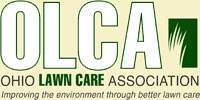How To Recover From Chinch Bug Damage

At Portage Turf Specialists, we know that maintaining a healthy and beautiful lawn in Ohio can sometimes feel like a battle against nature. One of the most notorious enemies of a lush lawn is the chinch bug. These tiny pests can cause extensive damage to your turf if left unchecked. In this blog, we’ll explain what chinch bugs are, how to identify an infestation, and the steps you can take to treat and recover your lawn from their damage.
What Are Chinch Bugs?
Chinch bugs are small, sap-sucking insects that belong to the family Blissidae. These pests are particularly destructive to turfgrass, especially during hot, dry weather. The two most common species that affect lawns are the hairy chinch bug and the southern chinch bug.
Identification of Chinch Bugs
Chinch bugs are tiny, typically measuring about 1/6 to 1/5 of an inch long. They have black bodies and white wings folded over their backs, creating an “X” pattern. Here’s how to identify them and their damage:
- Visible Signs: Check for tiny black bugs with white markings on your lawn. You might spot them near the soil surface or on the grass blades.
- Damage Pattern: Look for irregular patches of yellowing or browning grass that gradually expand. Unlike drought stress, chinch bug damage appears more scattered and is often found in sunny, dry areas of the lawn.
- Thatch: Chinch bugs thrive in lawns with thick thatch. If your lawn has more than half an inch of thatch, it’s more susceptible to an infestation.
Treating Chinch Bugs
Once you’ve identified chinch bugs in your lawn, it’s important to act quickly to prevent further damage. Here’s a step-by-step guide to treating an infestation:
- Watering: Begin by watering your lawn deeply and regularly. Chinch bugs prefer dry conditions, and maintaining adequate moisture can help reduce their activity.
- Portage Turf’s Lawn Insect Protection: For a comprehensive and effective solution, consider Portage Turf’s lawn insect protection services. Our expert team can apply professional-grade treatments to ensure thorough and lasting control of chinch bugs and other lawn pests.
- Cultural Practices: Reduce thatch by aerating your lawn and mowing at the recommended height for your grass type. Avoid over-fertilizing, as excessive nitrogen can promote chinch bug infestations.
Recovering Your Lawn
After treating for chinch bugs, it’s essential to help your lawn recover and return to its former glory. Here are some tips to aid in recovery:
- Reseeding: If the damage is extensive, overseeding the affected areas with a high-quality seed mix can help speed up recovery. Consider using a premium bluegrass mix or Turf Type Tall Fescues, which are disease and insect-resistant.
- Fertilization: Apply a balanced fertilizer to support new growth and strengthen your grass. Follow our recommended fertilization schedule for optimal results.
- Aeration: Core aeration can help improve soil structure, reduce thatch, and enhance root growth. This practice is especially beneficial if your lawn has compacted soil.
- Consistent Care: Continue with regular lawn care practices, including mowing, watering, and monitoring for pests. A healthy lawn is more resilient to future infestations.
Trust Portage Turf Specialists for Expert Lawn Care
At Portage Turf Specialists, we are dedicated to helping you maintain a beautiful, healthy lawn. If you suspect a chinch bug infestation or need assistance with lawn recovery, our team of experts is here to help. Contact us today to schedule a consultation and take the first step toward a vibrant, pest-free lawn.
By understanding and managing chinch bugs effectively, you can protect your lawn from these destructive pests and enjoy a lush, green landscape all season long. Trust Portage Turf Specialists to provide the expertise and care your lawn deserve





